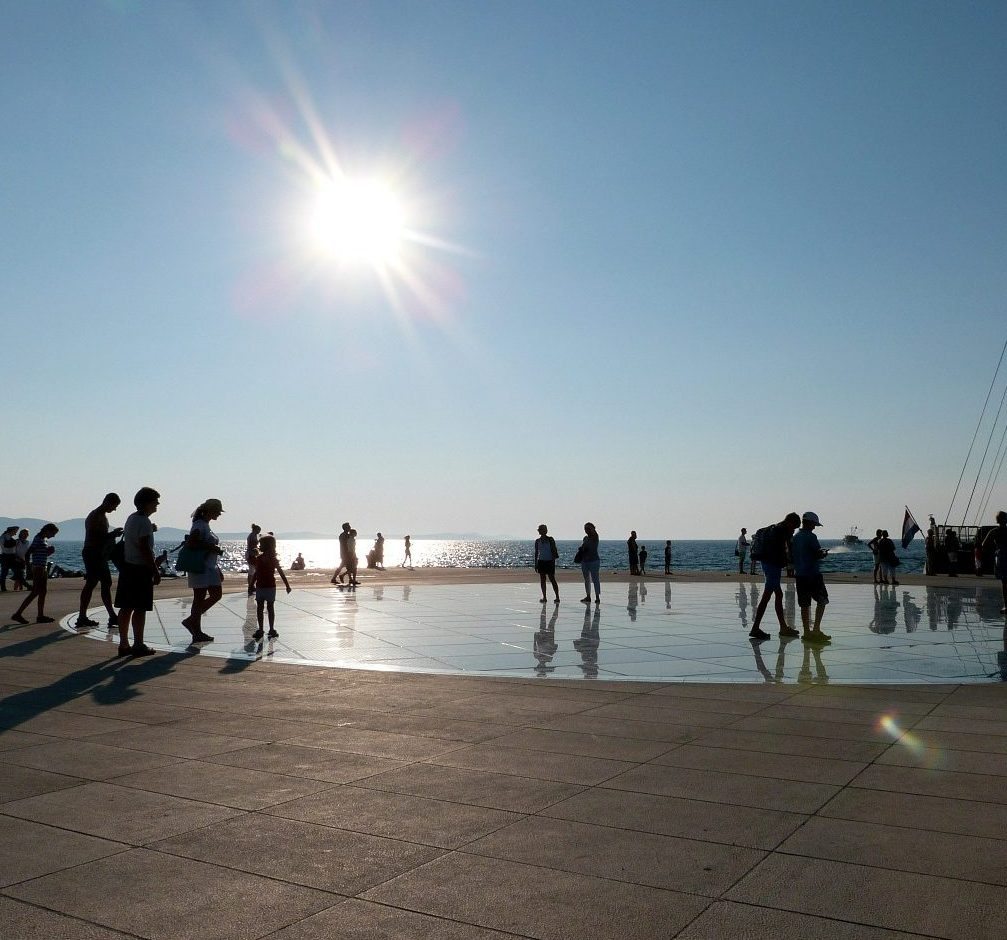
While the city of Zadar is some 3,000 years old, most of it was destroyed during WWII. Much of the rebuilding was done at a time when concrete was the material of choice and function was the sole architectural goal. As a result, the city has a somewhat austere feeling. Perhaps to inject some whimsy into the somewhat stark landscape, architect Nikola Basic designed the sea organ. The design consists of a set of concrete steps that hide 35 organ pipes. As the waves move water through the pipes, holes in the steps broadcast the sound it creates. Like snowflakes, the exact amount/pressure/speed of the water in the 35 pipes is never exactly the same twice, so there is no predictability to the “music”.
The same architect designed the nearby Greeting to the Sun, which provides a visual experience to compliment the auditory one of the sea organ.
This 22-meter circular art installation on the ground by the water’s edge features three hundred multi-layered glass plates arranged that employ solar cells to absorb sunlight during the day. Once it gets dark, the glass plates use this stored solar energy to create a dazzling light display that mimics the sea organ’s sounds. This attraction is not only art; it also powers a portion of the waterfront at a great cost savings. Finally, the metal circle on the perimeter features the names of Zadar’s saints as well as important holidays and the position of the sun in relation to the equator so that it also functions as a calendar of sorts. Pretty cool, huh?


Leave a Reply